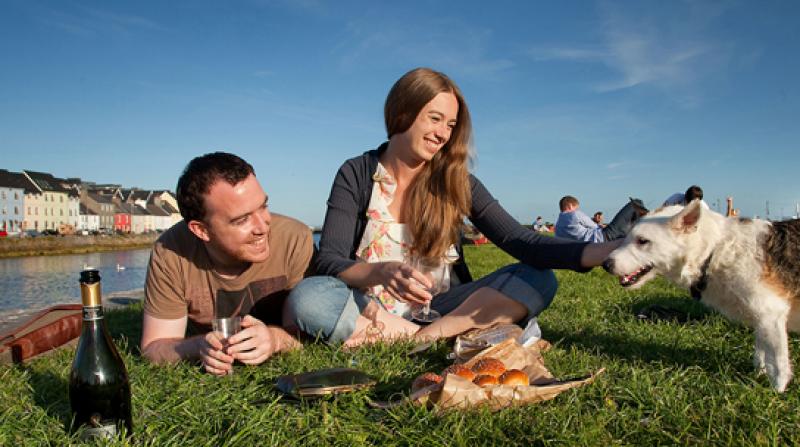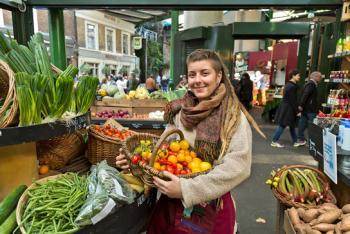Foraging Europe’s markets for the perfect picnic
This item appears on page 29 of the August 2020 issue.
Although we’ve had to postpone trips to Europe due to the pandemic, I believe an occasional dose of travel dreaming can be good medicine. The following is about one of my favorite European activities — a tasty reminder of what’s waiting for you at the other end of this crisis.
As a budget traveler, there’s no better experience than a picnic sourced from a local market and then eaten outdoors with a lively square, peaceful park or rejuvenated harborfront as a backdrop. Picnicking is simply the best way to enjoy Europe’s edible specialties economically. I’ve become a picnic connoisseur, and markets are at the heart of my picnic plans.
To me, the marketplaces of Europe are as important as the museums. They’re local life on display, and the energy is palpable. Purveyors shout their daily specials — cheeses, meats, fresh produce and warm-from-the-oven bread — while shoppers zigzag from stand to stand. Nearly every town has a market, and I make it a point to be there for the action. Of all Europe’s markets, three in particular, from trendy to thrifty, really whet my appetite.
• Barcelona, Spain, dazzles hungry travelers with its grand covered market, La Boqueria. Just off the city’s busy, touristy boulevard, Las Ramblas, La Boqueria is an explosion of chicken legs, stiff fish, colorful fruits and odd odors. Since as far back as 1200, Barcelonans have bought their animal parts and fresh produce here.
Today, the market is a social affair and a feast for the senses. Wander around — as local architect Antoni Gaudí used to — and gain inspiration.
Beyond meats and produce, the focus here is on Spanish specialties: from olives, mushrooms and artichokes to heartier jamón Ibérico (Iberian ham) and Catalan botifarra sausage. Scavenge this slice of Catalan culture for a picnic that challenges your palate.
Head to the booths farther in or along the sides for a bigger bang for your euro. If you don’t know the language, just point to what you want and write the amount on a scrap of paper, or type it into your smartphone’s notepad or translation app. Then head to Barceloneta beach and feast with your feet in the sand.
• Across the continent in Poland, the city of Kraków offers a deep dive into the authentic, untouristed market culture at the Stary Kleparz market, just steps from the city’s Royal Way. It’s just lots of hardscrabble people selling what they grow, bake and knit, while shoppers bustle around, stocking up for the week.
Search out the freshest paczki (doughnuts), the most popular bakery, the smelliest smoked-fish stand, and the old man with the smoked cheese. Buy sunflower seeds the way locals do: by the flower, with the seeds still nestled in their pod.
The picnic-perfect Polish specialty you’ll find everywhere around Kraków is the beloved zapiekanka, a toasted baguette with cheese, ketchup and a bewildering array of toppings. Grab one to accompany your market snacks while you stroll the Royal Way.
• The mother of all food markets is London’s Borough Market. The city’s oldest fruit-and-vegetable market, it’s been serving the Southwark community for more than 800 years. Though tourists overwhelm the place, it still has a fun carnival atmosphere and endless, enticing food stalls.
This is my favorite market for cobbling together a picnic with both local and international flair. There’s everything from diver-farmed oysters (boasting they’re straight “from boat to Borough”) and venison burgers to glistening chutneys and delicacies from Croatia and Calabria... and more than a few cheese mongers.
Bustling markets like these make picnicking an engaging cultural experience. Make an effort to communicate with the merchants and know what you’re buying — and how much you’re spending. You’ll probably need to hit several stalls to put together a complete meal. And take the opportunity to try something unfamiliar.
I always incorporate a picnic brunch, lunch or dinner into my sightseeing plans. I might start the day by scouring the market with my senses, then filling up my shopping bag and having breakfast on a riverbank. Markets typically close in the early afternoon, so it’s smart to stock up in the morning.
For an evening picnic, I find a spot on a castle wall to enjoy a commanding view and the setting sun. Some of my all-time best picnics have been lazy dinners accompanied by medieval fantasies in the quiet of after-hours Europe.
When I’m exploring the Alps, I punctuate my hike with a picnic. Food tastes even better on top of a mountain. And with any luck, a picnic could become a potluck, resulting in new friends and stuffed stomachs.
When travel to Europe resumes, be sure to graze its bounty of local markets. The experience will leave you not only with a full tummy but full of tasty memories.
Rick Steves writes European travel guides and hosts travel shows on public TV and radio. Contact Rick Steves’ Europe (Edmonds, WA; 425/771-8303, www.ricksteves.com).


